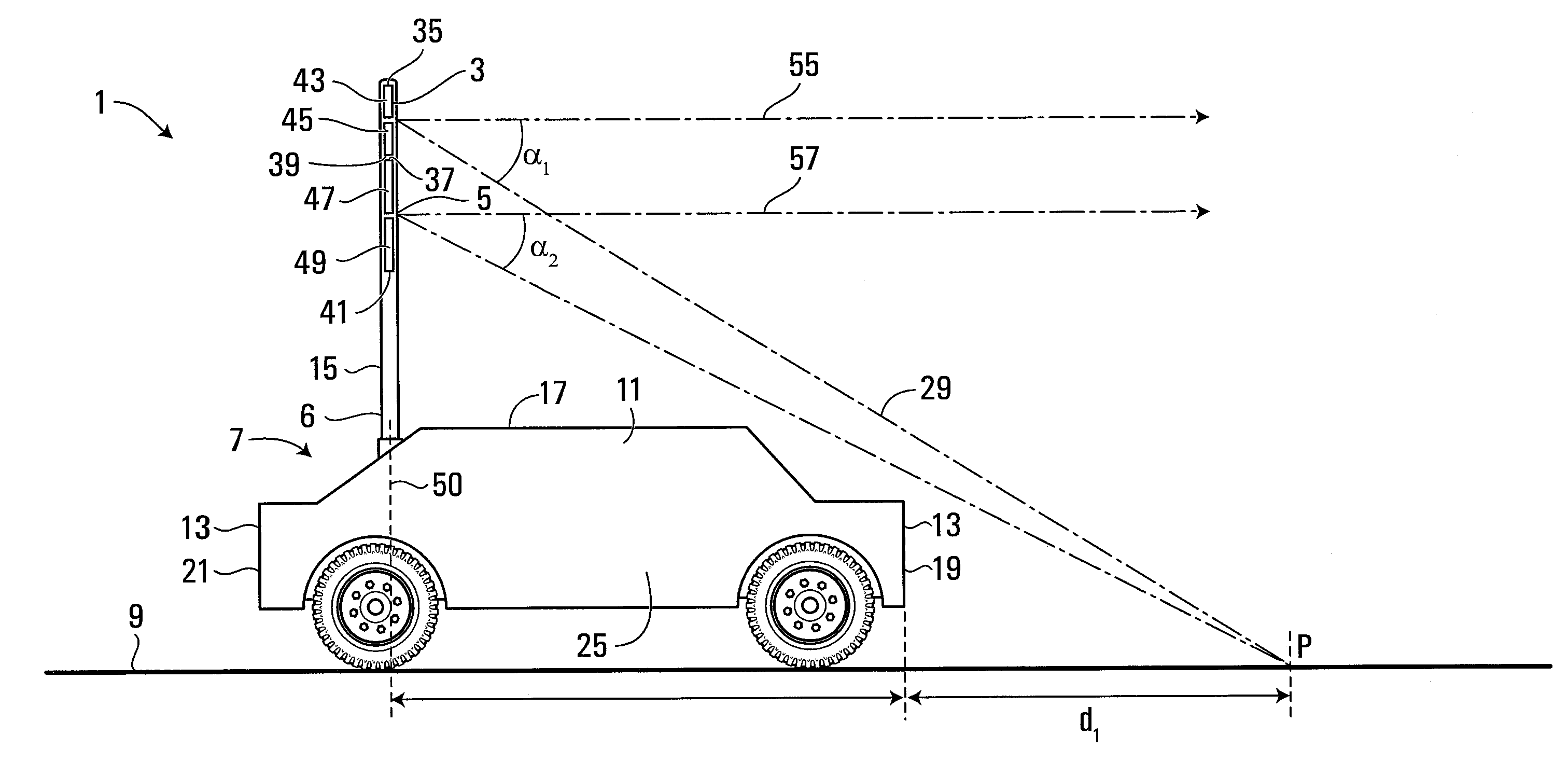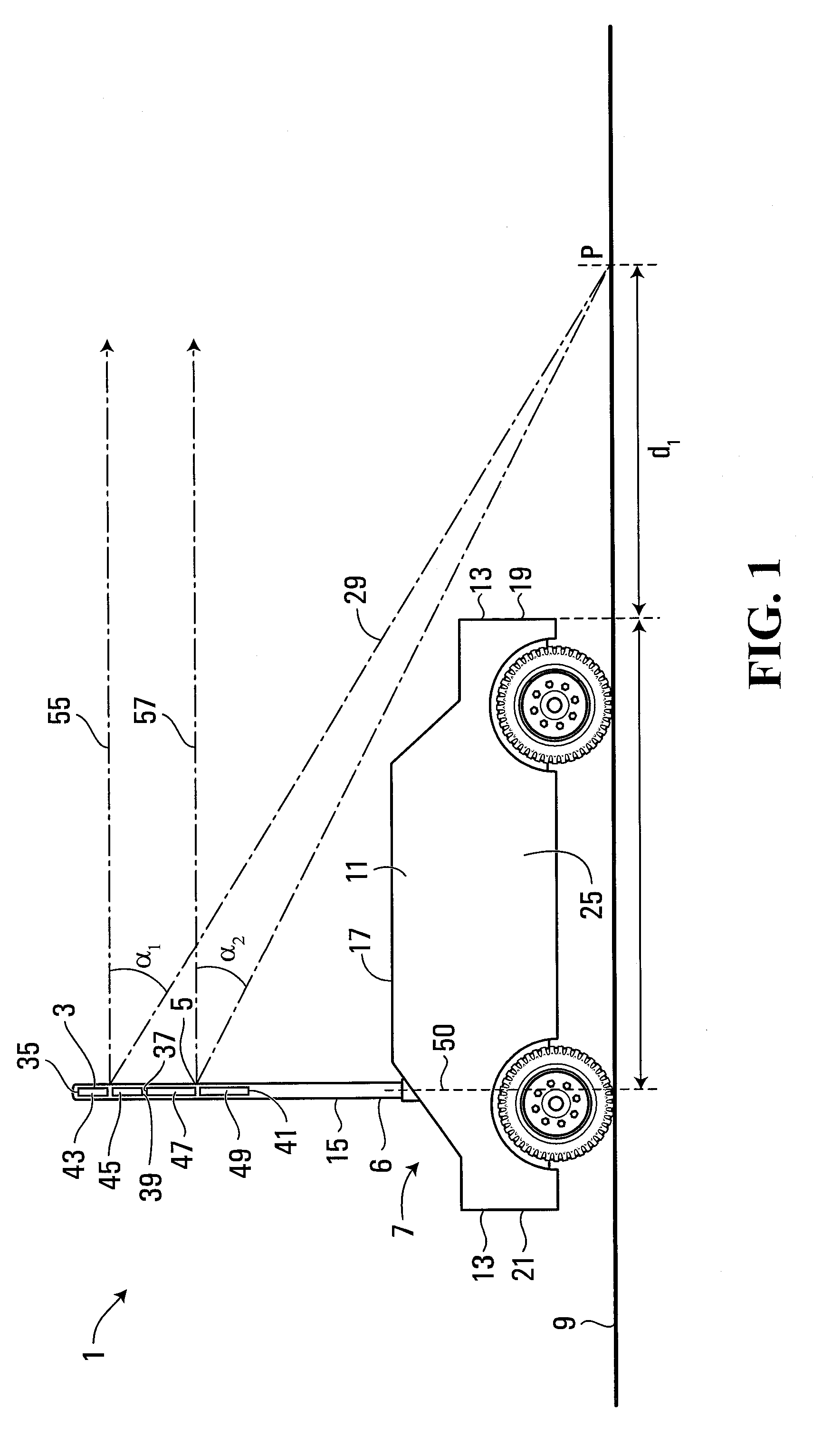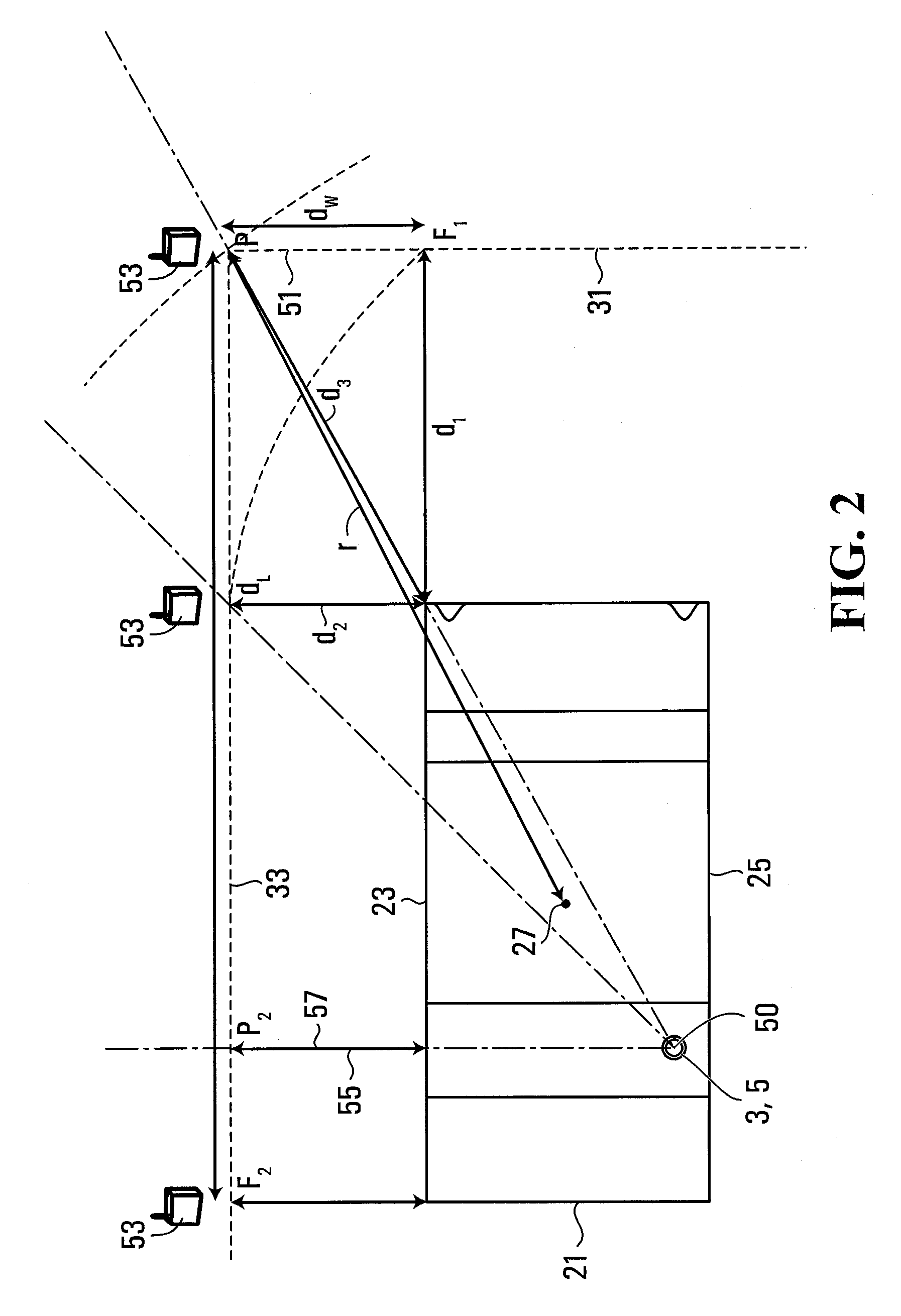Radio antenna assembly
a technology of radio antennas and antenna assemblies, which is applied in the direction of antennas, antenna adaptation in movable bodies, antenna supports/mountings, etc., can solve the problems of device remote detonation, ineffective jamming signal, and less than desired signal strength of receivers
- Summary
- Abstract
- Description
- Claims
- Application Information
AI Technical Summary
Benefits of technology
Problems solved by technology
Method used
Image
Examples
Embodiment Construction
[0108]Referring to FIGS. 1 to 3, an antenna assembly 1 comprises a first antenna 3, a second antenna 5 and a support 6 for supporting the first and second antennas at an elevated position above a surface 9, when mounted on a predetermined support structure 7. In this embodiment, the support structure 7 comprises a mobile structure 11 having a peripheral edge 13. The antenna support comprises an upright member 15 upstanding from the mobile structure 11 for supporting the first and second antennas at a position above the top 17 of the mobile structure. Thus, together, the antenna support 6 and the support structure 7 support the antennas at an elevated position above the surface.
[0109]The mobile structure has opposed front and rear ends 19, 21 and opposed left and right sides 23, 25. In this embodiment, the first and second antennas are located at a position which is offset from the center 27 of the mobile support structure 11 towards the rear end 21 and towards the right side 25. In ...
PUM
 Login to View More
Login to View More Abstract
Description
Claims
Application Information
 Login to View More
Login to View More - R&D
- Intellectual Property
- Life Sciences
- Materials
- Tech Scout
- Unparalleled Data Quality
- Higher Quality Content
- 60% Fewer Hallucinations
Browse by: Latest US Patents, China's latest patents, Technical Efficacy Thesaurus, Application Domain, Technology Topic, Popular Technical Reports.
© 2025 PatSnap. All rights reserved.Legal|Privacy policy|Modern Slavery Act Transparency Statement|Sitemap|About US| Contact US: help@patsnap.com



